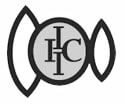
If you or someone close to you has been diagnosed with Keratoconus, you have probably done what most patients have done in the last 10 years. Googled it!
When most patients look up their options online, they stumble across a million articles about corneal collagen crosslinking otherwise known as CXL.
Now, luckily, the FDA has come around and approved a form of crosslinking in the USA after many years of trials, but the question still stands between which CXL procedure is best:
Epithelial off CXL vs. Epithelial on CXL.
Epithelial off CXL is the first form of CXL to gain US FDA approval, and it requires the removal of the epithelium (the outer layer of the cornea). Doesn’t sound so fun, we know.
Well lucky for you, and all of the keratoconus patients out there, a clinical study was presented at the annual meeting of the American Society of Cataract and Refractive Surgery (ASCRS) in Los Angeles, California in May of 2017, and again in Washington, DC, USA, in April of this year (2018).
About the Study:
The purpose of this clinical trial was to evaluate the effect of riboflavin–ultraviolet (UV)-A corneal crosslinking (CXL) without epithelial removal on ectatic corneal disease.
- The study took place in the Woolfson Eye Institute, Atlanta, Georgia as a prospective observational study.
- The patients who took part in this study were treated with a new riboflavin formulation without having their epithelium removed. They were then exposed to UV light (365 nm) at 4 mW/cm2 with on-off cycling for 30 minutes.
We will spare you the medical measurements (uncorrected/corrected distance visual acuities, corneal curvature, kmax, hoa’s, etc.) but what’s really important to anyone reading this is the results of this study.
Results:
- Of the 308 patients with keratoconus (or forme fruste keratoconus) in this study, 512 of their eyes were treated with the new riboflavin formulation without epithelial removal.
- 55 patients in this study had ectasia post having LASIK – and 80 eyes of their eyes were treated with the new riboflavin formulation without epithelial removal as well.
- 229 patients received bilateral treatments (both eyes), 95 of which were simultaneous (same time).
- Their UDVA and CDVA improved, their Kmax decreased, mean total HOAs and coma decreased at 2 years postoperatively. Kmax decreased more than 1 D in three times as many eyes as it increased more than 1 D.
- No eyes progressed, and
- There was no loss of effect between 1 and 2 years postoperatively
- No vision-threatening events were observed
- Pain typically resolved within 24 hours, and visual acuity returned to preoperative levels in 1 to 2 days.
What do these results mean to you?
Epithelium-on CXL using this new protocol halted the progression of keratoconus and ectasia after LASIK.
It was found to be safer and provided more rapid visual recovery than CXL with epithelial removal, allowing routine bilateral, simultaneous treatment.
Basically, the bottom line is = Epi On CXL may be the new way to go.
If you are interested in hearing more about this procedure, Crosslinking in general or other options in treating keratoconus please call our office at 713-626-5544 today! Did you know that our doctors and team at Slade & Baker Vision Center in Houston, performed the LARGEST Epithelial-On CXL FDA trial and we always championed this procedure! We are so happy to share these study results with you.





